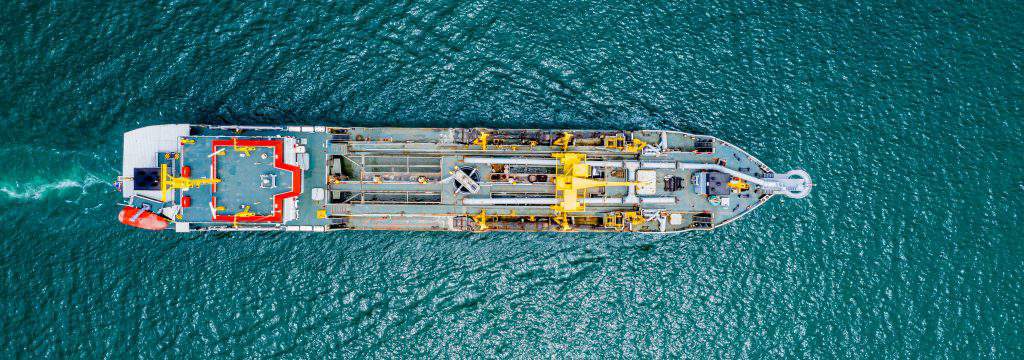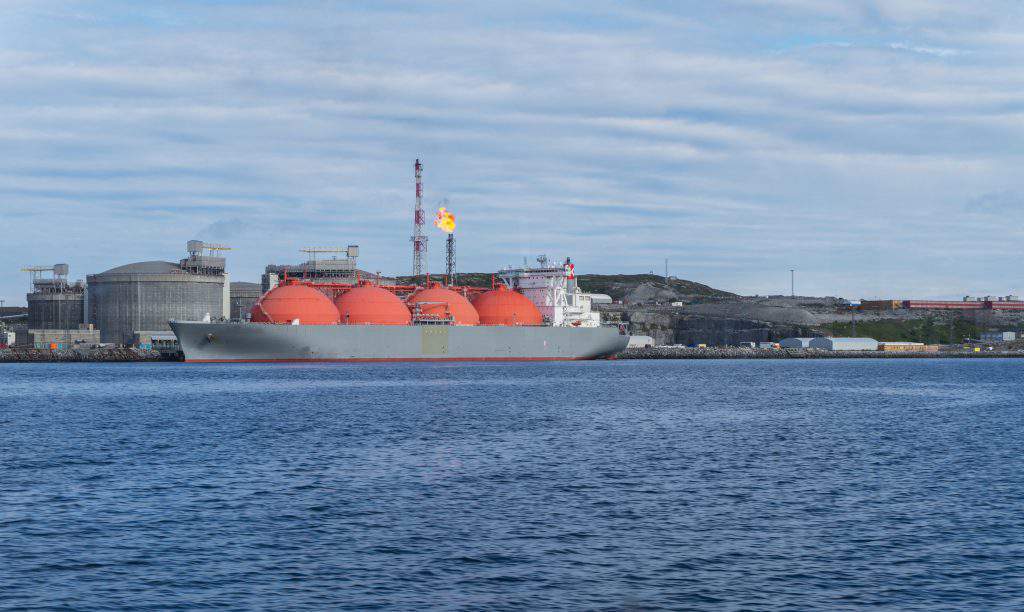At present there is a sense that the situation regarding LNG supplies to the European market appears favourable. A growing number of players are capable of supplying LNG to the market in stable and predictable quantities; the LNG trading system has shown relatively high flexibility and price adaptability in recent years, although the gain in price has been less significant than many liquefied natural gas enthusiasts predicted.
The yield of LNG sales by 2019 at a level of 40% of the entire global gas market was viewed as a milestone; this indicated primarily that liquefied gas is starting to determine the level of gas prices and will create the real conditions for the eventual “detaching” of gas from oil and also that the attractiveness of investing in LNG in the short-term will be so high that it will trigger a massive investment of surplus investment resources in creating new capacities for liquefaction and regasification. Considering the relative accessibility of the technology, this will create a supply surplus in the market relatively quickly. It is probable that Royal Dutch Shell, for example, based its assessments about the possibility of LNG achieving a 60% share of the global gas market on exactly these two factors.
Europeans’ hopes and those of Brussels itself for solving fundamental questions of EU energy security through supplies of American shale-based LNG are not without foundation. In particular, a sharp growth in LNG production capacity in the United States, from the equivalent of 30 billion cubic metres (bcm) to 87 bcm of gas is planned for 2019. With such rates of growth in infrastructure, it does not appear entirely improbable to expect American exports to EU countries to reach the level of 110 bcm a year as previously announced (the figure was announced by US energy secretary Rick Perry as a guide for 2020), although it does appear extremely ambitious.
Implementing these plans is currently complicated by the following factors: Despite a sharp increase in supplies of American shale LNG to the European market in 2018-2019, the growth in volume is still lagging somewhat behind figures announced previously. Moreover, Europeans have experienced an instability in supplies, although this was associated with weather factors and not with a delay in infrastructure development. American LNG is still generally more a political than an economic factor in the European market at present, and this should be taken into account.

In this instance, it is possible to speak of excessive optimism in evaluations of the development of growth potential in American exports. Expert consensus has been that removing politically motivated limits on the development of new shale reserves and weakening environmental control is allowing the United States to rapidly achieve the level of external supplies it has announced. However, the political situation in the United States; the growth in the influence of radical Greens in the Democratic party; and growing expectations of economic recession (and the perceptible risk of a financial crisis) could at the very least lead to uncertainty about the industry’s development plans. Nevertheless, publicity and political activity around the growth of supplies of American LNG to Europe is allowing American shale producers to maintain the industry’s relatively high level of attractiveness for investors.
On the other hand, the Europeans remain interested in the growth of supplies from the US and in stimulating Americans’ expectations in relation to the European energy market. In conditions of surplus provider capacity and competition between suppliers, the Europeans, who have in large part provoked the sharp growth of interest in LNG, will be able to secure relatively low prices (there are currently nearly twenty countries in the LNG market and this number will probably grow; in addition, a number of countries that operate outside a centralized policy are represented by several suppliers). Importantly, at the first stage, competition under this scenario should be between relatively cheap forms of gas: Russian pipeline gas, Middle Eastern and African LNG, and LNG originating in Russia. American shale gas will appear in significant quantities when a new, relatively low-level price equilibrium has emerged, and it can be launched onto the market instead of Russian pipeline gas.
Under this scenario, significant volumes of American LNG should flow into the EU at the very beginning of 2022. The entire scenario will otherwise be under threat from the prospect of significant and unpredictable spikes in the spot price. In essence, such a plan – elements of which have leaked from expert circles from time to time – in fact denies the possibility of sustained economic growth in the United States itself and of continued increase in corporate energy use in America.
There are therefore elements of manipulation on both sides in this situation. The problem is that the structure and prospect of developing both the LNG market and the European energy market are becoming less and less transparent, and this brings with it the risk of strategic error.
It is revealing that despite initial over-optimistic scenarios, experts expect a reduction in LNG supplies to Europe from 2021, due to an increase in demand for liquefied gas in Asia and a gradually increasing shortage of LNG capacities worldwide, which may only be fully addressed by 2030-2032. A situation like this could present an exceptionally significant challenge for EU energy security. As a result, the proposed level of the EU’s LNG purchases may fall to 50 bcm by 2025, which would clearly be insufficient for a substantial change in the energy balance.
This disproportion will have to be compensated for: even if one assumes stagnation of industrial energy consumption in Europe, statements made by former European Commission head Jean-Claude Juncker in 2018 about meeting 60% of gas requirements with LNG would entail buying the LNG equivalent of 300-320 billion cubic metres of gas per year. This may prove an overwhelming task, considering the prospect of a deep restructuring in the entire global gas market.

The key driver of the growth in LNG consumption globally will be the increase in LNG consumption in the Asia Pacific region. This will come about primarily because of China, which is aiming to increase the share of gas in its energy balance in order to reduce harmful emissions into the atmosphere. Experts predict that in the next five years, gas consumption in China will increase by 7% every year, and what is more, this pace will not depend entirely on rates of economic growth: China is entering a phase in which there are growing social needs for electrical energy, and also a period of improvement in the environmental element of its industry, although this factor is having slightly less of an effect than was earlier anticipated.
It is important to note that despite steps Beijing has taken to increase its own gas production, this will substantially lag behind the growth in demand. China’s hopes for a shale revolution have not come to fruition. The aim of extracting shale gas in volumes of up to 60 bcm per year by 2020 has proved to be too ambitious. In the current conditions, Beijing will be forced to increase volumes of imported gas. It is predicted that China’s dependence on foreign supplies will increase steadily from 43% in 2018 to 52% by 2025. There will probably be changes in this trend between 2027 and 2030, but by then regionalization processes in the global economy and the formation of updated economic macro-regions, for which the energy effectiveness of production will be exceptionally important, will already have peaked. Furthermore, growth rates for other economies in the region other are not yet clear; this will also strengthen interest in LNG since only South Korea can count on meaningful volumes of pipeline gas – and it faces highly complex political circumstances.
For now, the EU is enjoying favourable circumstances thanks to a price situation in which supplies to Europe are proving rather more profitable than supplies to Asia. But this state of affairs could change; the price situation in the Asian energy market has been unpredictable.
Whatever the situation regarding prices, however, Asia will be the main market for American LNG in the period after 2022. The factor that will be key in this is the lack of competition from pipeline fuel in most cases. The slowing down of China’s economy is not disastrous; in fact, the coastal economic regions where supplies of American LNG are directed are continuing to develop at relatively fast rates, leading to growth in corporate as well as consumer energy consumption. This explains Washington’s unwillingness to use legislative instruments to lower the LNG price for its European partners.

The Trump administration does not intend to reduce the incomes of US corporations; it considers the question of price secondary in the context of ensuring the European Union’s energy security and is formally positioning its LNG as “freedom gas” – underlining the extent to which the energy market is politicized. Even if one puts Trump’s characteristic propensity for manipulation in business and the economy to one side, it is obvious that the United States does not and will not regard shale gas supplies to Europe from the point of view of commercial effectiveness and freedom of competition in the near future. On the other hand, the US shale hydrocarbon industry is entering an extremely difficult period, with the issue of its effectiveness and the need to obtain a financial return becoming very pressing. This will make it extremely difficult for the US to give EU countries significant financial bonuses. Finally, shale gas supplies are seen as one of the most important tools by which America can achieve strategic compromise with China on a whole new level. This makes China the priority on which the United States will focus; Europe will remain a strategic partner, but one to whom it does not make sense to make any meaningful economic concessions.
One must also mention a project that the US is promoting for political reasons: this is for developing the India Pacific region, in which India is a key player that may become a significant consumer of American LNG, although certainly not the dominant one.
In these circumstances, it would be mistaken to try to implement earlier plans for diversification at any cost and to artificially reduce the importance of Russian pipeline gas. It is more likely that the importance of pipeline gas supplies (primarily meaning the raw material from Russia) will increase; this could make a major contribution to stabilizing the price range while being free of non-economic risks.

